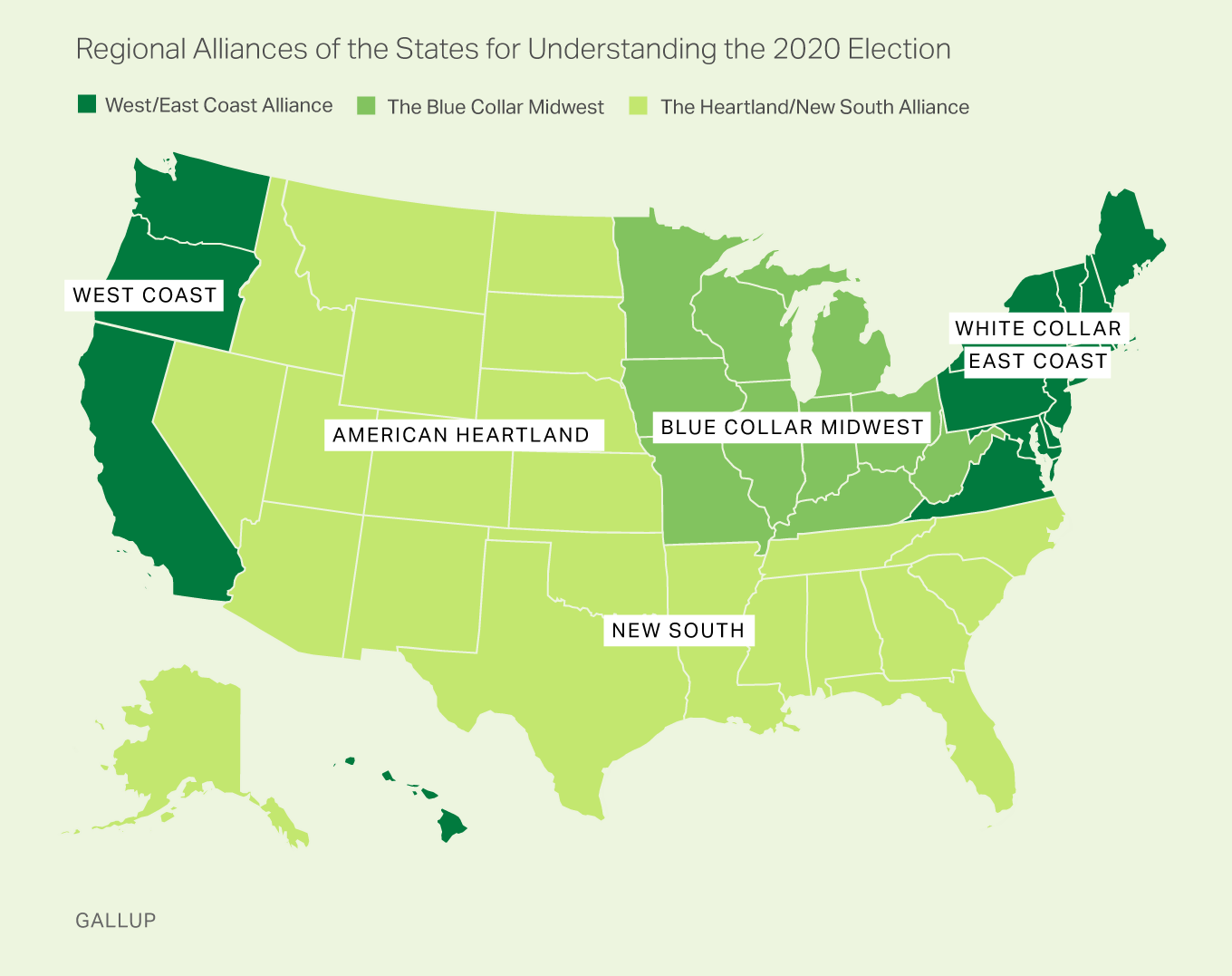A New Regional Paradigm for Following U.S. Elections
JUNE 25, 2018
by V. Lance Tarrance
Geopolitics is defined as the interrelationship of politics, economics, demographics and geography, and can influence not only elections, but delineate new political power centers and political strategies. Regional groupings of states that are organized around cultural and demographic similarities as well as geography can provide important ways of approaching U.S. politics.
U.S. politics today are characterized by deep partisan divides on cultural and political issues. The Cook Political Report recently said that "across the country we're seeing a political division -- some say the greatest since Reconstruction" with "seismic shifts, not just Republicans on one side and Democrats on the other … but on a geographic level."
Traditional Census regions -- the Northeast, Midwest, South and West -- don't fully align with today's political divisions, and the well-known red/blue state classification lacks geographic references. A new scheme is needed that hews closer to the socio-political differences among the states while retaining enough geographic unity to qualify as a "geopolitical" framework or lens for making sense of the nation.
Historians and ethnographers have made many attempts to define regional groupings that represent "the real America." Joel Garreau's 1981 book, The Nine Nations of North America, regrouped the states in the U.S. into multiple power centers based on distinct cultural, ethnic and geographic identities. In 2011, Colin Woodard released American Nations: A History of the Eleven Rival Cultures in North America, in which he maintains that there has never been "one America," but rather several rival blocs of Americas, each a distinct nation that looks at elections and everything else in its own way.
More:
https://news.gallup.com/opinion/polling-matters/235838/new-regional-paradigm-following-elections.aspx?utm_source=tagrss&utm_medium=rss&utm_campaign=syndication
Uncle Joe
(58,272 posts)Thanks for the thread Judi Lynn
CozyMystery
(652 posts)Makes me realize that, just as I had surmised, my choices of where to live in the USA all have high costs of living and/or snow, both of which I heartily want to avoid. West/East Coast Alliance.
I don't think I'd fit in anywhere else, and neither would my immediate family. We are a group of Atheists who lean far left. We live now in an area full of people who are pretty much the exact opposite of us, hence the daydreaming about moving someday.
My sister wants me to move to Texas (she lives there) or Alabama (we had happy childhood years there at Maxwell AFB). She has always lived in the South. Not gonna happen. At least she voted for Mrs. Clinton.
Nitram
(22,755 posts)If you look, you can find like-minded communities in some university towns in the south such as Durham, NC. Charlottesville has the University of Virginia, and a lot more besides to keep it diverse and liberal.
CozyMystery
(652 posts)Nitram
(22,755 posts)Clinton got a 49.7% plurality in the popular vote against Trump, who carried 44.4%. Northern Virginia is liberal and has a large population.
DavidDvorkin
(19,465 posts)Nitram
(22,755 posts)and complex country, ethnically, geographically, culturally, and politically. In some ways we are more like the collection of nations in Europe than a single nation. That we have remained a single country is little short of a miracle. A limited number of broadcast TV channels insured we spoke the same language and shared many of the same experiences. That unitary source of information and entertainment has fragmented into tens of thousands. Movies, sports, and music probably still bind us. Our institutions of higher learning, as well. Thanks for the excellent article.
appalachiablue
(41,102 posts)America, today, can arguably best be understood in terms of three super regions, in turn based on five geographic regions, as follows:
- 1. The West/East Coast Alliance, comprised of the West Coast and White Collar East Coast regions:
1. West Coast: California, Oregon, Washington and Hawaii
2. White Collar East Coast: Maine, New Hampshire, Vermont, Massachusetts, Rhode Island, Connecticut, New York, New Jersey, Pennsylvania, Maryland and Delaware -- plus Virginia and the District of Columbia
- 2. The Heartland/New South Alliance, comprised of the American Heartland and New South regions:
1. American Heartland: North Dakota, South Dakota, Nebraska, Kansas, Oklahoma, Texas, Montana, Arizona, Colorado, Idaho, Wyoming, Utah, Nevada, New Mexico, Alaska
2. New South: North Carolina, South Carolina, Georgia, Florida, Tennessee, Alabama, Mississippi, Arkansas, Louisiana
- 3. The Blue Collar Midwest: Ohio, Michigan, Indiana, Illinois, Wisconsin, Minnesota, Iowa, Missouri, West Virginia and Kentucky
And here is the visual representation:
